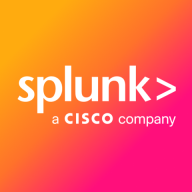

Splunk Enterprise Security and Anomali are products in security information and event management. Splunk holds the advantage in data analysis and customization, while Anomali excels in threat intelligence integration.
Features: Splunk Enterprise Security is known for comprehensive data analysis, real-time monitoring, and customizable dashboards. Anomali stands out with its threat intelligence platform, superior threat pattern recognition, and extensive third-party integration.
Ease of Deployment and Customer Service: Splunk Enterprise Security supports flexible deployment with both cloud and on-premise solutions, backed by detailed documentation and responsive support. Anomali offers rapid deployment with a cloud-centric model, featuring strong analytical capabilities, yet customers find Splunk more suitable for complex environments.
Pricing and ROI: Splunk Enterprise Security's higher setup cost is offset by promising ROI through large-scale data analysis optimization, offering long-term value. Anomali provides a more cost-efficient setup, beneficial for organizations prioritizing threat intelligence, leading to quicker ROI.

Anomali delivers advanced threat intelligence solutions designed to enhance security operations by providing comprehensive visibility into threats and enabling real-time threat detection and management.
Anomali stands out in threat intelligence, offering an innovative platform that integrates data to identify and analyze threats effectively. It enables teams to streamline threat detection processes and respond to incidents with increased agility. With a focus on accuracy and efficiency, Anomali supports cybersecurity professionals in making informed decisions to safeguard their networks consistently.
What are Anomali's core features?In industries like finance and healthcare, Anomali is implemented to address specific challenges like compliance and data protection. By using this platform, organizations gain the ability to adapt to evolving threats, ensuring robust and adaptable security postures tailored to industry demands.
Splunk Enterprise Security is widely used for security operations, including threat detection, incident response, and log monitoring. It centralizes log management, offers security analytics, and ensures compliance, enhancing the overall security posture of organizations.
Companies leverage Splunk Enterprise Security to monitor endpoints, networks, and users, detecting anomalies, brute force attacks, and unauthorized access. They use it for fraud detection, machine learning, and real-time alerts within their SOCs. The platform enhances visibility and correlates data from multiple sources to identify security threats efficiently. Key features include comprehensive dashboards, excellent reporting capabilities, robust log aggregation, and flexible data ingestion. Users appreciate its SIEM capabilities, threat intelligence, risk-based alerting, and correlation searches. Highly scalable and stable, it suits multi-cloud environments, reducing alert volumes and speeding up investigations.
What are the key features?Splunk Enterprise Security is implemented across industries like finance, healthcare, and retail. Financial institutions use it for fraud detection and compliance, while healthcare organizations leverage its capabilities to safeguard patient data. Retailers deploy it to protect customer information and ensure secure transactions.
We monitor all Security Information and Event Management (SIEM) reviews to prevent fraudulent reviews and keep review quality high. We do not post reviews by company employees or direct competitors. We validate each review for authenticity via cross-reference with LinkedIn, and personal follow-up with the reviewer when necessary.